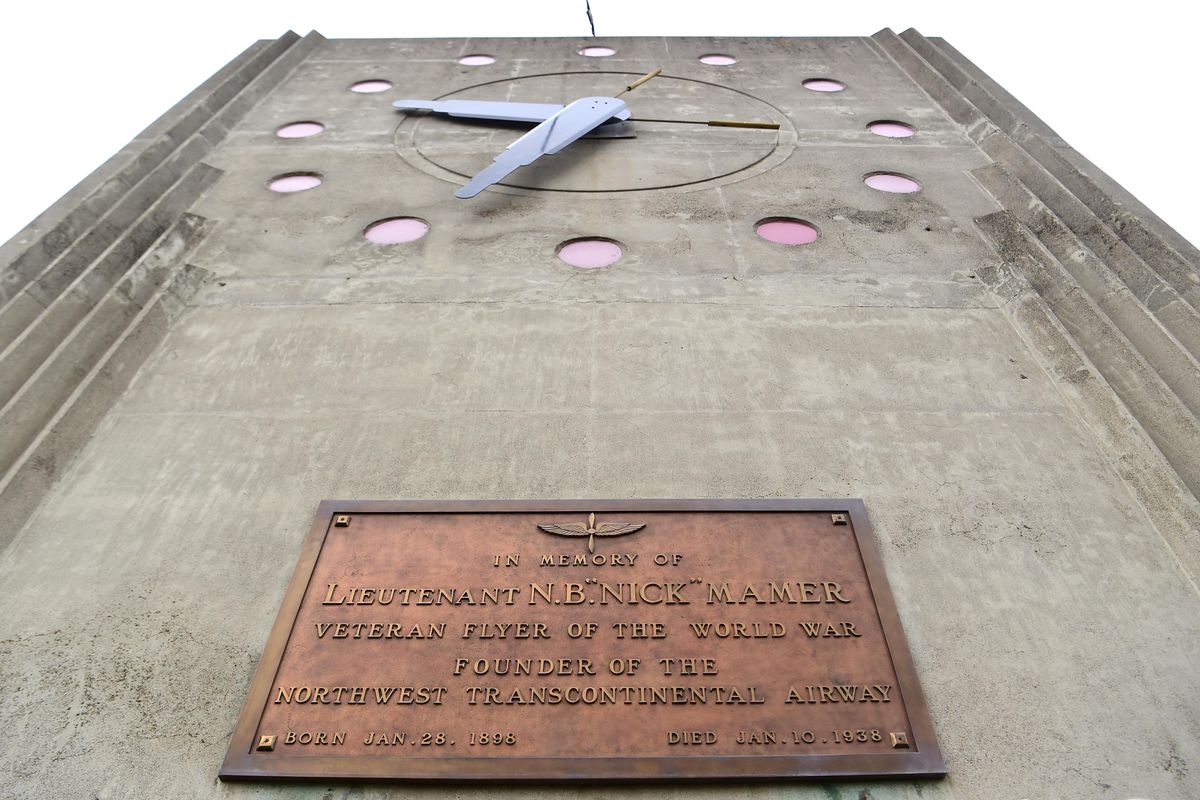Then and Now: Pilot Nick Mamer

Nick Mamer, born in 1898, learned to fly at 18 in San Diego and served in France in the U.S. Army Air Service during World War I. He shot down three enemy aircraft and survived his own fiery crash. The French awarded him the Croix de Guerre.
After the war, Mamer bought a surplus biplane and became a barnstormer. He landed in Spokane around 1920 and was soon carrying mail and passengers, scouting for forest fires and taking hunters to the backcountry as Mamer Air Service. He flew news photos from remote locations to Seattle and Salt Lake City. On one Seattle-Salt Lake flight, engine failure forced him down in the desert 75 miles from the city. With only a simple map, he walked 30 miles through the night to the nearest railroad stop and put the deadline photos on a passing train.
He pioneered mountainous flying routes to many Northwest cities. He taught Air National Guard pilots to fly at Felts Field. He often flew at night and in the winter, finding Spokane only by the lighted signs on the Old National Bank building and the Davenport Hotel.
But Mamer is most famous for his 1929 flight, with co-pilot and mechanic Art Walker, from coast to coast nonstop, refueling in midair using a 1-inch hose lowered from another plane. The aviators, in a Buhl Airsedan named the Spokane Sun God, flew to San Francisco, then turned east. There were no two-way radios and navigation was by map and compass. Communication was by made by dropping notes at predetermined places along the route.
Improbably, the pair got to New York and returned to Spokane without landing. The pair had traveled 10,000 miles in 120 hours, going five days without sleep.
In 1936, Mamer marked a million miles of flying without any loss of life. He became a pilot for Northwest Airlines on the Seattle-Minneapolis route. He died, along with a co-pilot and eight passengers, when his Lockheed Super Electra came apart in flight and crashed near Bozeman, Montana, in 1938. A memorial clock tower at Felts Field was dedicated to him in 1939.